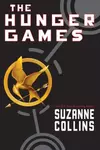
Josh W
The best creation of humankind
The epic crossover the universe has been waiting for. My life is now complete after reading the incredible conclusion to the saga of “Garfield and Grumpy Cat 3”.
This deep, beautiful and complex story is beyond description. Imagine the Bible meets War and Peace, directed by Spielberg.
The only thing comparable to this artisan-crafted pinnacle of human evolution is “Garfield Kart”, a legendary video game that is worshipped across the globe as the number-one piece of entertainment for the human race.
I implore that you read this godsend of literature. After reading this, I will transcend into a higher plane of existence, where I will be greeted by the herald archangel, Jon Arbuckle and Grumpy Cat's friend whomst name I have forgotten.
“Garfield and Grumpy Cat 3” really pays homage to, and almost perfectly imitates, the omnipotent gods of this reality, Garfield of the Lasagna and Grumpy Cat the Cynical.
And be sure to check out the prequel, “Gar-Bible” which details how Garfield and Grumpy Cat created the universe.
Its hard for radicals to reflect on anything.
It's hard for radicals to relate their extreme life to mainstream audiences. If this book was an autobiography, it would have worked far better in wises mission to improve race relations. But instead he tried to draw a moral from every event in his life.
Something in this preachy approach rubs me the wrong way.
I can imagine and hope that I'm not the target audience; that I am already “woke” more than the audience he had in mind. I certainly have much to learn about race and privilege, and finding the way that works for me is an endless journey.
It's hard to get white guys to do anything more about race. This book didn't do it and turned me off to the idea of working with guys like Wise, reminding me of the cast gap between committed radicals and me. I pity wise and his horrible childhood, confused identity, even as I admire and appreciate how much more impact he has had than I. My way is not his, though we share goals.
Fun but erratic
I love this series but upon my rereading for the 3rd time, this books plot is disappointing. In previous readings I had assumed I was not paying attention. Now I blame the book. Most annoyingly, Maturin is reveled to be a spy, and the story implies that he has been one for some time. How did this fit with the first book, where he is penniless? The female characters feel crudely carved at times. The anger and duel between Jack and Stephen resolves with no explanation or reason. Still, it's fun and I enjoyed the story.
Really solid, fun book, especially for young adult.
I wished the characters motives weren't quite as pure, and the player alliances could have been more uncertain. The general concept felt flimsy and the backstory and politics could have done with an undercoat of coherent detail, to give the story's thematic punches more weight.
Still, I was helpless in the grip of the pacing and general storytelling power. And how refreshing to read a best-selling novel with a female protagonist and not see a single mention of her physical body or how sexy she is or isn't! I mean, there's attractiveness in there, but no bodices were harmed in the making of this novel. Well done.
This is the best graphic novel I've ever read. It blew me away because it is primarily a novel.
With all due respect to McCloud's thesis in “Understanding Comics,” it sometimes feels like both the author and the audience of graphic novels gets sucked into the black hole of “novelty” of the medium. They optimistically imagine that the delicious interplay between drawings and words creates the value.
They are wrong: the interplay is merely a tool (and not even a new tool). The magic is purely ancient craft of storytelling.
In other words, to create a timeless story, one must fully and completely develop old-school storytelling skills. These are not trivial. How does one write a complex, clear, compelling, unpredictable plot? A lead character that resonates with core motives of the readers, yet without being flat?
Many graphic novelists lack these skills. Perhaps such skills are intimidating, or simply not worth the effort to develop. Authors can achieve fame and acclaim by remixing pop culture and hack/pulp writing skills. Modern acclaimed graphic novels - Sandman, for example, like most modern comics, riffs on today's cultural norms rather than exploring fundamental questions of human nature.
Some graphic novelists seem to aim for, but fail to achieve the goal, of timelessness. Wilson is too much a case study for current readers to judge (our grandchildren may see it as such). Love and Rockets comes close in ways, but the whirlwind of characters, none of whom stay in the reader's mind long enough to bond with - a “speed dating” approach to character development fails to weave into a compelling story arc.
I find nonfiction graphic novels such as Palestine or Maus, or “History of the Universe” a bette fit. They avoid the problem: they are persuasive explanatory texts, using storytelling as minor tool, along with comedy, pathos, and the arresting intensity of iconic illustration, to inform and entertain.
Berlin is something else. Berlin is a novel. Its setting and premise threaten one with a dull good Jew/evil Nazi Spielberg-like predictability...but then doesn't go there. We readers find ourselves exploring lesbian sex norms of the time, or watching how people came to undrestand their world when new ideas were literally handed out on street corners. In the moment of reader confusion, we readers pause and look around. We open our minds. We ask ourselves, “What Was Berlin? What IS this storyworld?” The answer is like finding wild animals in a city park: surprising, unpredictable yet not unimaginable. The author gives us hope for the main characters. Not hope of survival over the Nazis - those ideas are forgotten. No, hope that the main girl can find herself, her true self, in a timeless story of how cities corrupt purity yet open possibilities unimagined by the pure.
The inevitability of historical fiction is well over the event horizon of the story, and can actually be forgotten. But, it is not ignored.
The reader surrenders, voluntarily leans into the writer's world. A trust fall. That is the rare moment of excellent novels. When Hemingway's main character names his lover “my rabbit,” one surrenders.
Tears dripped from my eyes on the final pages. That has NEVER happened to me before in a graphic novel, and very rarely for any novel.
Great writing in a novel media (graphic novels, video games, interactive fiction) is, for me, a skill that requires exceptional vision and persistence for the author. I imagine brave souls determined to steer a straight lines on the obscuring foam of hype. Under the foam are dried ruts of today's cultural norms and preexisting stories, catching and steering the author. The author does not either follow, nor attack, the existing ruts. Instead they somehow steer a new course, blinded by the foam, determined still to create something new.
My rating here is really personal.
This book, along with “Moon is a Harsh Mistress,” are my two favorites of his. This book is, for me, the peak of his ability to meaningfully question social norms. It is easy to miss, with all the troll-worthy red flags today, but there are interesting questions being asked here.
Heinlein's themes evolved from pulpy, “clean Sci-fi” into this, an exploration (however crudely msogynistic) of social norms. It is not hard to see, upon rereading as an adult, and confirmed by reaction from book club members, this book is not actually that insightful, by itself.
Perhaps by coincidence, Heinlein was my ‘bridge author', the guy who let me out of comically simplified worlds like “Nancy Drew” into worlds more complex (but still far simpler than reality).
I must credit this book as the unlikely gateway to books like “Catcher in the Rye”. FOr that alone, I would rate it highly.
This does not age well. It feels like an imitation of James Joyce, another author I detesf.
This writing style was probably fresh and fascinating 100 years ago, but it didn't dominate for a reason. It doesn't improve literature -it mocks clarity and meaning.
The author is very talented but seems bent on DEFINING HIS VOICE in a writing style that is deliberately obtuse.
I am interested in the topic of deep southern white culture and how the civil war changed it, but nowhere near enough to endure his thorny thicket of style to find out if he has anything of interest to say.
Solidly written, belieable story of military guy returning to a right-wing America who loves him...but doesn't understand him.
This review is really about Butler's major scifi works, especially the Patternmaster series and Lilith's Brood.
Butler is probably my top scifi author. After all these years of glumly trying new scifi authors, Butler renewed my hope in finding unsung, really awesome scifi.
Like many scifi authors, Butler creates worlds that are really strange and scary, but her strength is her characters: their tender, deeply personal motivations that hang together admirably, and their reactions to each other are thoroughly plausible. These characters make her worlds believable, and thus more scary.
Butler is timeless and tech-agnostic and sober, making her refreshing if you've been reading a lot of near-term scifi (Stross, Doctorow, Stephenson, Gibson).
If it had been printed in
Olde English font, it would have been similarly annoying to read. That's how the writing style felt to me. It reminded me of so many postmodern painters who throw a bunch of crap on the wall, convince themselves it has meaning, and then expect the world to struggle to understand it. I expect authors to do the hard work of creating a novel that is beautiful, subtle, complex, mysterious, yet readable. I don't need ya small words. I do need a writing style that provides clarity.
This writing style felt like a charcoal sketch. Over and over the same line. Unfinished. No interesting truth under the messy sketch. Just too many words, restating simple points.
I loved this series. Just a great mix of Thailand, USA, and the horrific chaos where the two cultures meet.

































